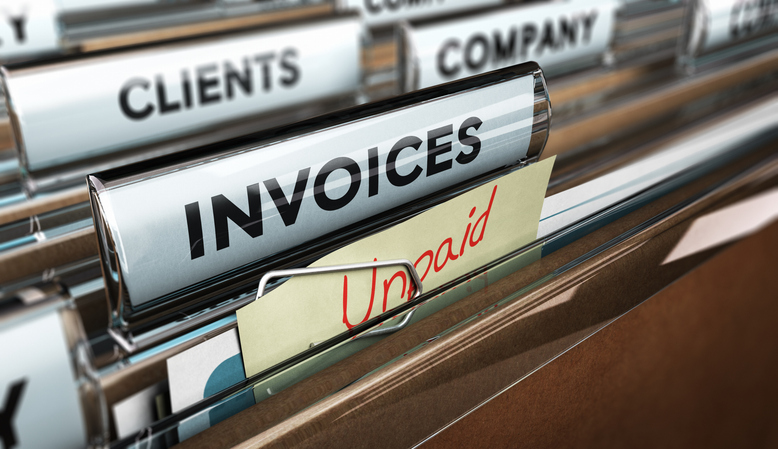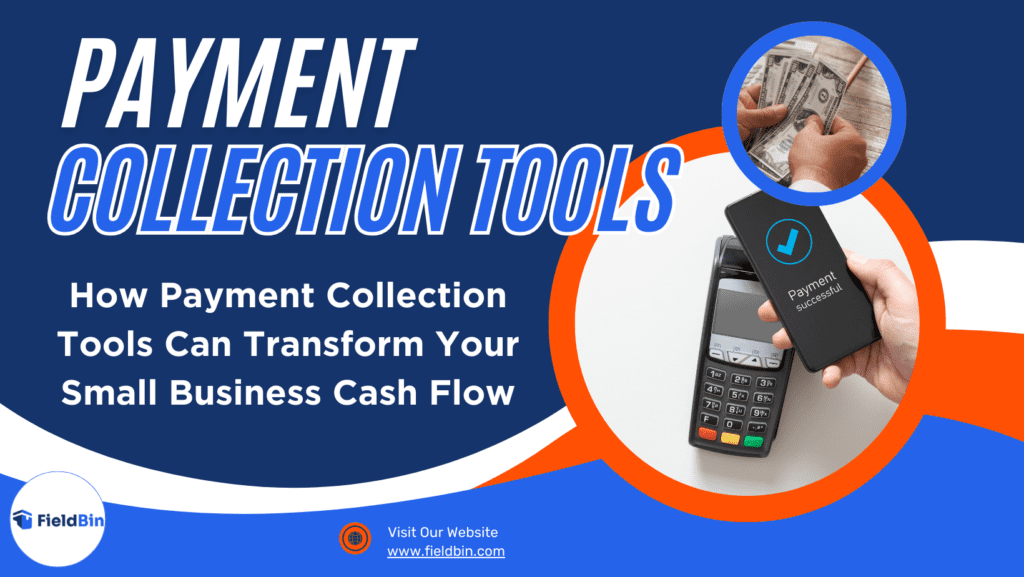Cash flow keeps the lights on, pays employees, and supports growth in any small business. But for me, managing cash flow was a constant struggle. When I first started my business, the stress of waiting for payments to come in was overwhelming. Late payments, unpredictable income, and the never-ending task of chasing invoices made it difficult to focus on anything else. I found that using payment collection tools made a significant difference, helping me manage cash flow more effectively and reducing the stress of handling late payments and inconsistent income.
I know I am not alone in this. Many business owners face these same challenges. Then I discovered something that made a real difference: payment collection tools. These tools simplified the payment process, took the hassle out of manual invoicing, and helped me get paid on time. In this post, I will share how these tools can improve your cash flow, helping your business run more smoothly and your finances become more stable, just like they did for me.

Understanding Cash Flow Challenges for Small Businesses
Before I get into the benefits of payment collection tools, let me explain why managing cash flow is so important for small businesses. Cash flow is simply the money coming into and going out of your business. When it’s steady, you can pay your bills, invest in growth, and handle any unexpected costs that come up. But when cash flow gets disrupted, you might miss payments, strain relationships with suppliers, or even put your business at risk.
I remember waiting on a payment from a client that was delayed for weeks. The stress of trying to cover my bills while waiting for that check was tough. It made me realize just how fragile cash flow can be, especially when you’re working with a tight budget.
Late payments from clients are often at the root of these cash flow issues. When you have limited resources, even a small delay in getting paid can lead to financial stress. I have spent hours sending invoices and following up with clients—time that could have been spent growing my business. That is why finding a solution to keep cash flow steady became so important to me.
If you want to learn more about why cash flow management is essential or explore ways to improve cash flow, these resources are a good place to start.

What Are Payment Collection Tools?
Payment collection tools help me with tasks like invoicing, getting paid, and keeping track of what customers owe. I used to handle these tasks manually—it took a lot of time and added stress, especially when payments were late.
Here are a few of the tools I have found helpful:
- Invoicing Software: This lets me create and send invoices quickly. When I started using it, I realized how much time it saved me, and my invoices looked more polished. Learn more about the benefits of invoicing software.
- Automated Payment Reminders: These reminders are sent to clients automatically, so I do not have to follow up constantly. Before using them, I spent hours each week just sending reminders. Now, it is all handled for me. Find out how automated reminders can improve cash flow.
- Online Payment Gateways: This allows clients to pay their invoices online. When I made it easier for clients to pay, I noticed I got paid faster and more reliably. Explore the options for online payment gateways.
- Mobile Payment Solutions: This lets me accept payments wherever I am, making it easier to do business on the go. It has been especially helpful when I needed to take payments at events or on-site with clients. Read about mobile payment solutions and their benefits.
These tools work seamlessly with the accounting systems I already use, so I could start using them without making big changes to how I run my business. Adding these tools to my routine has reduced stress and improved my cash flow. Learn how integrating payment tools can enhance your business operations.

The Benefits of Payment Collection Tools for Cash Flow Management
Now that I’ve gotten a good understanding of what payment collection tools are, I want to share how they’ve helped my small business and improved my cash flow.
Timely Payments
One of the biggest benefits I’ve noticed from using payment collection tools is that they help me get paid on time. Before I started using these tools, I often put off sending invoices, which led to late payments. But now, by automating tasks like invoicing and payment reminders, I don’t have to chase payments as often. For example, with automated invoicing, I can send an invoice right after finishing a job or delivering a product, avoiding the delays that often happen when I do it manually. Learn more about the benefits of automated invoicing.
Automated payment reminders have also made following up with clients easier and less awkward. I used to spend too much time drafting reminder emails, worrying about getting the tone just right. Now, I’ve set up the system to send reminders before the payment is due and follow-ups if it’s late. This regular communication keeps my invoices on my clients’ radar, making it more likely they’ll pay on time. Read about how automated reminders can improve your cash flow.
Saving Time and Effort
Managing payments manually used to eat up a lot of my time. I’d spend hours each week creating invoices, sending them out, tracking who paid and who didn’t, and following up on overdue accounts. It was exhausting and took me away from other important parts of running my business. Payment collection tools have simplified this process, cutting down the manual work I need to do and freeing up time to focus on other things. Explore the top payment collection tools available for small businesses.
With automated systems, I can set up recurring invoices for regular clients, track payments as they come in, and match payments to my records. This not only saves me time but also helps avoid mistakes, keeping my financial records accurate. Discover how automation can streamline your invoicing and payment processes.
More Predictable Cash Flow
One of the toughest parts of running my small business has been dealing with unpredictable cash flow. When I didn’t know when payments would come in, it was hard to plan for future expenses or make investments in my business. Payment collection tools have helped by making sure I get paid on time and regularly.
For example, because my business offers services on a subscription model, I’ve been able to set up recurring payments that are billed and collected each month. This steady income has made it easier to manage my cash flow and plan for the future. Many of these tools also offer features that let me track payments and spot potential cash flow problems before they get out of hand. Learn more about managing cash flow with subscription models.
Better Experience for Customers
Payment collection tools do more than just help my business; they’ve also made things easier for my customers. Before I started using these tools, I often heard feedback that the payment process was a hassle for clients. By offering different payment options—like credit cards, bank transfers, or digital wallets—I’ve made it easier for them to pay on time. Many of the tools I use also let customers pay directly through the invoice or a secure online portal, making the process even smoother. Explore the best online payment gateways for small businesses.
A simple, professional payment process has reflected well on my business, helping build trust with my customers. When they see that I have a reliable system in place, they’re more likely to pay promptly and keep doing business with me. Read about the importance of a professional payment system.
How to Choose the Right Payment Collection Tool for Your Small Business
With so many payment collection tools available, choosing the right one for my business was not easy. I have been through this process, so I want to share a few things that helped me make the right choice:
Understand My Business Needs
I started by looking at my cash flow issues and figuring out what my business needed most. Early on, I noticed that late payments were a problem, and manual invoicing took up too much of my time. Understanding these challenges helped me choose a tool that directly addressed them.
I asked myself questions like:
- How am I currently managing invoices and payments?
- How many transactions do I handle each month?
- What features do I need, like automation, multiple payment options, or integration with my accounting software?
Important Features to Look For
When I was checking out different payment collection tools, I focused on features that matched my needs, such as:
- Compatibility: I needed a tool that worked well with my existing accounting software and other business tools. This made the transition smoother for me. Learn more about integrating payment systems with your accounting software.
- Ease of Use: I wanted something easy to set up and use because I did not have time to learn a complicated new tool. Explore user-friendly payment solutions.
- Security: Protecting my business and customer data was important, so I looked for tools with strong security features. Read about the importance of security in payment processing.
- Cost and Room to Grow: I also thought about the cost and whether the tool could grow with my business. It was important to find something affordable and scalable as my business expanded. Understand the cost factors and scalability of payment tools.
Compare Popular Tools
Once I knew what I needed, I compared some of the top payment collection tools available. I looked at their features, pricing, and customer reviews to find the one that fit my business best. Reading customer reviews gave me a better idea of what to expect and helped me make an informed decision. Check out reviews of top payment collection tools.
This approach made it easier for me to choose the right tool, and it has made a real difference in how I manage my cash flow and time.

Implementation Tips and Best Practices
After selecting the right payment collection tool for my business, I discovered that using it effectively was key to maximizing its benefits. Here is what I found helpful:
Getting Started: Step-by-Step Guide
- Set Up the Tool: I began by following the setup instructions, creating an account, linking it to my existing systems, and adjusting the settings to fit my business needs. For detailed setup guidance, you can refer to this guide from QuickBooks.
- Connect with Existing Systems: Integrating the tool with my accounting software and customer management system streamlined my operations and saved me a lot of time. For more information on integration, this article on integration best practices is helpful.
- Customize Invoices and Payment Reminders: I tailored my invoices and payment reminders to reflect my brand, which gave them a professional look and helped maintain good client relationships. For tips on customizing invoices, check out this guide.
Best Practices for Getting the Most from the Tool
- Update Payment Terms: I regularly review and update my payment terms to make sure that they are clear for clients. This practice helps avoid confusion or disputes. To learn more about setting clear payment terms, read this article.
- Use the Tool’s Analytics: The tool’s analytics feature has been useful for tracking payment patterns. This allows me to adjust my cash flow plans and make informed business decisions. For more on using analytics for cash flow management, this article is informative.
- Train the Team: I ensured that my team understood how to use the tool properly. Proper training helped avoid mistakes and improved our workflow. For advice on training your team, this resource offers helpful tips.
Common Pitfalls to Avoid
- Over-relying on Automation: Although automation is helpful, I learned not to depend on it entirely. I still check payments regularly to catch any issues early. For insights on managing automation, this article provides useful information.
- Choosing a Tool That Cannot Grow with Me: I considered whether the tool could scale with my business. Choosing a tool that can handle increased transaction volumes and more complex needs as my business grows has saved me from needing to switch tools later. For advice on choosing scalable tools, this guide is a valuable resource.
Following these steps has helped me make the most of my payment collection tool, resulting in improved management of my cash flow and time.
Conclusion
Payment collection tools have really changed how I handle cash flow in my small business. These tools automate invoicing, simplify payments, and help ensure that I receive payments on time. This shift has allowed me to focus more on growing my business rather than dealing with payment issues.
I remember the days when I struggled with late payments and constantly had to chase down invoices. It was stressful and took up a lot of my time. Once I started using a payment collection tool, everything improved. The tool automated invoicing for me, so I no longer had to manually send reminders or follow up on overdue payments. Setting up recurring invoices for regular clients became simple, and managing payments became much easier.
If you are facing issues with late payments or unpredictable cash flow, consider using a payment collection tool. The right tool can help improve your financial stability, reduce stress, and prepare your business for future growth.
Managing cash flow effectively is key to long-term business success. For me, improving how I manage payments has been important for investing in my company’s future. If you are in a similar situation, explore payment collection tools and take control of your cash flow.

